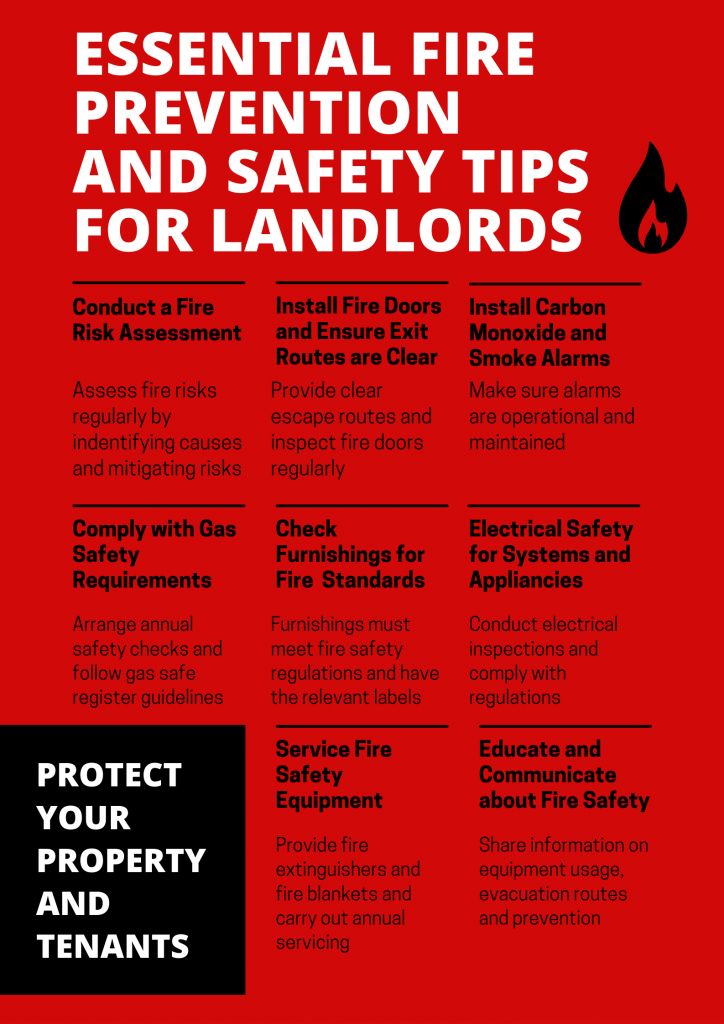Fire Safety Advice for Landlords Poster

Estimated reading time: 2 minutes
Our informative poster presents eight essential fire safety tips and advice for landlords. As a responsible landlord, ensuring the safety and well-being of your tenants should be a top priority. One of the most critical aspects of maintaining a secure living environment is fire prevention and safety. Fires can be devastating, causing property damage and endangering lives. However, with proper knowledge and proactive measures, landlords can significantly reduce the risk of fire incidents and protect their tenants and investments.
By fostering a culture of safety within your properties, you can create a secure environment that promotes peace of mind for both yourself and your tenants. Let’s explore these vital tips that can make a substantial difference in preventing fire hazards and mitigating potential risks.
The 8 tips for fire prevention and safety tips for landlords are:
- Conduct a fire risk assessment: Regularly evaluate your property to identify potential fire hazards and develop strategies to mitigate risks.
- Install fire doors and ensure clear exit routes: Install fire-resistant doors and maintain unobstructed escape routes to allow safe evacuation in case of a fire.
- Install carbon monoxide and smoke alarms: Install and regularly test carbon monoxide and smoke alarms to detect early signs of fire or harmful gas presence.
- Comply with gas safety requirements: Follow proper gas safety guidelines, including regular checks and maintenance, to prevent gas-related incidents.
- Check furnishings for fire standards: Use fire-resistant or fire-retardant furnishings to reduce the risk of fire spreading and minimize potential damage.
- Ensure electrical safety for systems and appliances: Regularly inspect and maintain electrical systems and appliances to prevent electrical faults that can lead to fires.
- Service fire safety equipment: Keep fire extinguishers, sprinkler systems, and other fire safety equipment well-maintained and up-to-date.
- Educate and communicate about fire safety: Train residents, employees, or occupants about fire safety measures and procedures, fostering a safety-conscious environment.
